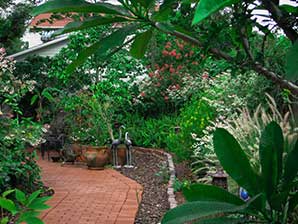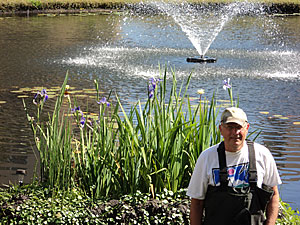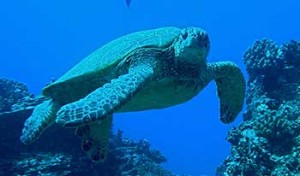[printfriendly]Tampa Bay Water Announces 2013 Water-Wise Winners

Six homeowners from across the region were recognized with 2013 Community Water-Wise Awards for best landscaping designs using Florida-Friendly principles. Applicants completed a brief online description of his or her yard along with a photo, then each entry was evaluated and scored on-site by a local Florida-Friendly Landscaping representative.
The winning water-efficient single-family homeowners from each local government are:
Tampa: Allen Gray
Hillsborough County: Linda Carroll
New Port Richey: Denise Houston
Pasco County: Chris Bill
St. Petersburg: Craig Pethe
Pinellas County: Sandy Neither
Each winner received a 2013 Water-Wise landscape stepping stone during an award ceremony presented by officials from their local governments.
[su_divider]St. Petersburg Homeowners Association Honored for Pond Restoration
 A condominium association in St Petersburg has received the “Golden Mangrove Award” as the Tampa Bay Estuary Program’s (TBEP) most outstanding Bay Mini-Grant project for 2012.
A condominium association in St Petersburg has received the “Golden Mangrove Award” as the Tampa Bay Estuary Program’s (TBEP) most outstanding Bay Mini-Grant project for 2012.
The Shores of Long Bayou Homeowners Association was honored for the community’s “Ibis Pond” restoration project in St. Petersburg (see Bay Soundings, Summer 2011 and Winter 2012). Led by resident Ernie Franke, the condo residents restored a small stormwater pond on their property, removing invasive plants and muck from the pond, and replanting the shoreline with native plants that help cleanse runoff and attract wildlife.
The Ibis Pond Restoration project was selected from 21 community groups, non-profits, and organizations who received Bay Mini-Grants from TBEP last year. “One of the most impressive aspects of this project was the combination of habitat restoration, education, beautification and community involvement,” said Cathy Quindiagan, a member of TBEP’s Community Advisory Committee and one of the award judges.
[su_divider]TBEP Awards Mini-Grants
The Tampa Bay Estuary Program has awarded $86,000 to 18 community groups for projects that directly involve citizens in restoring and improving Tampa Bay. The funds come from sales of the Tampa Bay Estuary license plate – also known as the “Tarpon Tag.”
By county, the recipients are:
Hillsborough County
- Community Stepping Stones, $5,025 for “I AM RIVER”
- Dowdell Middle Magnet School, $4,075 for “A Day of Discovering Our Bay”
- Learning Gate Community School, $4,964.67 for pond restoration and water quality monitoring
- Lowry Park Zoological Society of Tampa, Inc., $5,000 for “Teens4Tampa Bay: Empowering Youth to Save the Estuary”
- National Audubon Society, Inc., $5,000 for erosion control/oyster bar habitat creation/phase 2 at the Alafia Bank Bird Sanctuary
- Tampa Bay Watch, $5,000, Westshore waterways seagrass transplanting project
- Tampa Shore Special Dependent District, #60, $5,000 for stormwater filtration system improvement
Pinellas County
- Canterbury School of Florida, $4,800, estuary education partnership with Pace Center for Girls
- Eckerd College, $4,480, aquaponics model system
- Friends of Boyd Hill Preserve, $5,000, swamp woodland restoration project
- Lake Forest Condominium Homeowner Assoc., $4,997, community pond restoration
- Shorecrest Preparatory School, $5,000, coastal awareness program
- UF/IFAS Extension, Florida Sea Grant in Pinellas County, $3,384, “Building Connections: A Collaborative Climate Change Education Project”
Manatee County
- Around the Bend Nature Tours, LLC, $5,000, “Teaching New Pathways for Stormwater”
- Manatee School for the Arts (MSA), $5,000, marine science education program
Regional Awards
- Florida Fish and Wildlife Conservation Commission, $4,967.42, update and upgrade the Online Boating and Angling Guide to Tampa Bay
- The Florida Aquarium, $4,610, workshops for secondary teachers on climate change
- West Central Florida Chapter of the American Meteorological Society, $5,000, environmental weather workshop for teachers.
New Report Shows Recycling Rates Decline Over Last 20 Years
Sales of disposable beverage containers have increased while recycling rates have declined, according to a new report from the Container Recycling Institute. “Bottled Up: Beverage Container Recycling Stagnates (2000-2010),” shows that sales of disposable beverage containers are up by 22% from 2000-2010 but the recycling rate declined by 10% over the same period.
Of the 243 billion beverage packages sold in the U.S. in 2010, 153 billion were landfilled, littered or incinerated. This put the national wasting rate for 2010 at 63%, a nearly 10% increase over 2000, and a whopping 20% since 1990 when only about 52% of containers were wasted.
Some of the reasons cited for the drop in recycling include the surge in bottled water sales (up more than 400% since 2000) and sales of beverages consumed away from home.
The report can be downloaded at www.container-recycling.org/index.php/publications/2013-bottled-up-report.
[su_divider]Green Sea Turtle Nests More Than Double in 2013
 The number of green sea turtle nests in Florida last year more than doubled the count of the previous highest year, according to biologists with the Florida Fish and Wildlife Conservation Commission (FWC) who documented more than 25,000 green turtle nests on 26 index beaches in the state in 2013.
The number of green sea turtle nests in Florida last year more than doubled the count of the previous highest year, according to biologists with the Florida Fish and Wildlife Conservation Commission (FWC) who documented more than 25,000 green turtle nests on 26 index beaches in the state in 2013.
“We are astounded and pleased by the high number of green turtle nests documented in 2013,” said Blair Witherington, FWC research scientist. “It looks like the years of conservation efforts for this endangered species are paying off.”
The trend for green turtles shows an exponential increase in nesting over the past 25 years. In 1989, biologists documented only 464 green turtle nests on index beaches. In 2013, this index nest count was 25,553. The index count represents about 70% of green turtle nesting statewide.
Leatherback sea turtle nest counts have also risen dramatically over the past quarter century. However, the 2013 count of 322 leatherback nests on index beaches was 193 lower than last year.
Loggerhead sea turtles, the most prevalent sea turtle species on Florida’s shores, accounted for 44,810 nests on index beaches this year, down from 2012’s near-record count of 58,172 nests. The high level of loggerhead nesting in 2012 followed a pronounced drop in the species’ nest counts between 1998 and 2007.
[su_divider]